Grand Prix motor racing, a form of motorsport competition, has its roots in organised automobile racing that began in France as early as 1894. It quickly evolved from simple road races from one town to the next, to endurance tests for car and driver. Innovation and the drive of competition soon saw speeds exceeding 100 miles per hour (160 km/h), but because early races took place on open roads, accidents occurred frequently, resulting in deaths both of drivers and of spectators. A common abbreviation used for Grand Prix racing is "GP" or "GP racing".
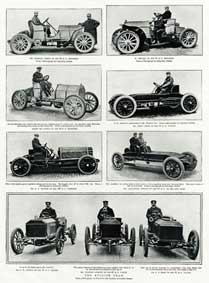
In automobile racing, the Gordon Bennett Cup was an annual competition which ran from 1900 to 1905. It was one of three Gordon Bennett Cups established by James Gordon Bennett, Jr., millionaire owner of the New York Herald.

Joel Woolf Barnato was a British financier and racing driver, one of the "Bentley Boys" of the 1920s. He achieved three consecutive wins out of three entries in the 24 Hours of Le Mans race.
The 1928 24 Hours of Le Mans was the 6th Grand Prix of Endurance that took place at the Circuit de la Sarthe on 16 and 17 June 1928.

Louis Auguste Wagner was a French racing driver who won the American Grand Prize and the inaugural British Grand Prix. Wagner was also a pioneer aviator.
The 1906 Grand Prix season is regarded as the first Grand Prix racing season. It marked the advent of two iconic races: The French Grand Prix and the Targa Florio.

The 1927 Grand Prix season was the third AIACR World Manufacturers' Championship season and the second run to a 1.5-litre engine limit. In a dominant display, the championship was won by Delage, with team driver Robert Benoist winning four of the five Grand Prix.
The 1907 Grand Prix season was the second Grand Prix racing season. It saw a blossoming of circuit events, with the shift from the inter-city races. The popularity of the inaugural French Grand Prix and Targa Florio saw those events held again. The new Kaiserpreis was the first major motor-race held in Germany. This year also saw a number of voiturette races as the number of specialist small-engine cars grew which gave close, exciting racing very popular with spectators.
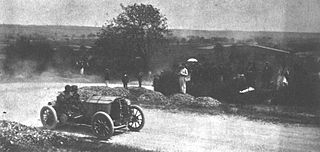
The Paris–Madrid race of May 1903 was an early experiment in auto racing, organized by the Automobile Club de France (ACF) and the Spanish Automobile Club, Automóvil Club Español.
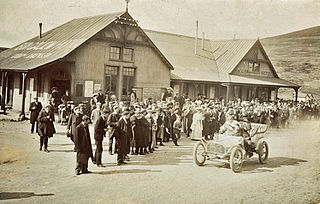
The 1905 International Tourist Trophy was an automobile motor race held on 14 September 1905 on closed public roads along the Highroads Course on the Isle of Man. It was organised by the Automobile Club of Great Britain and Ireland, and was the first time that what became known as the RAC Tourist Trophy was awarded. The race lasted over six hours and was won by John Napier, driving an Arrol-Johnston. Percy Northey finished second in a Rolls-Royce, while the Vinot-Deguingand driver Norman Littlejohn was third.

Léon Théry was a French racing driver, nicknamed "Le Chronometer", who won the premier European race, the Gordon Bennett Cup, in both 1904 and 1905.
The 1902 Gordon Bennett Cup, formally titled the III Coupe Internationale, was a motor race held on 26–28 June 1902, on public roads between Paris, France, and Innsbruck, Austria. The race was held over a 565 km section of the route of the Paris-Vienna race, held concurrently. France were to attempt to defend the Gordon Bennett Cup against Britain, and each country was represented by three entries, with the car that finished the race in the shortest time winning the race on behalf of his country. Selwyn Edge driving a Napier, and representing the Automobile Club of Britain and Ireland, was the only competitor to finish the race and so Britain were the winners of the Gordon Bennett Cup and would be required to defend it in Britain the following year.

Jarvis & Sons Limited were South London-based motor dealers for Morris and MG, and latterly coachworks providing special bodies for various car chassis until after World War II.

Charles Jarrott was an English racing car driver and businessman. Jarrott raced from 1900 to 1904, winning the 1902 Circuit des Ardennes race and competing in the 1903 and 1904 Gordon Bennett Cup races. He was the chair of the Motor Cycling Club's Annual Dinner at the Trocadero on Saturday 12 December 1913. He co-founded a car import firm in 1902 and was a founder member of the Automobile Association, serving as chairman in 1922.

The 1903 Gordon Bennett Cup, formally titled the IV Coupe Internationale, was a motor race held on 2 July 1903, on the Athy Circuit consisting of closed roads in Ireland. The race consisted of seven laps - alternating for six laps over a shorter circuit to the west of Athy and longer circuit to the East, before a final lap on the longer circuit to make the total distance 527 km. A British entry had won the previous edition of the race, which meant that the rights to host the race fell to the Automobile Club of Britain and Ireland. Legislation was passed to allow the race to take place on roads in Ireland, then a part of the United Kingdom. Britain were to attempt to defend the Gordon Bennett Cup against France, Germany and the USA, and each country was represented by three entries, with the car that finished the race in the shortest time winning the race on behalf of his country.
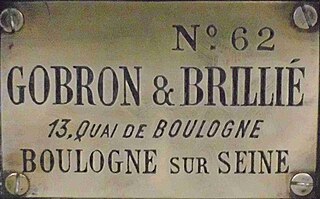
Gobron-Brillié was an early French automobile manufactured from 1898 to 1930. The original company, Societé des Moteurs Gobron-Brillié, was founded by the French engineer, Eugène Brillié, and industrialist, Gustave Gobron, at 13, quai de Boulogne, Boulogne-sur-Seine, near Paris, in 1898.
Arthur John McCormack, CBE, (1866–1936) was an English businessman and patent holder. He is principally associated with Vickers' Wolseley Motors Limited where he was MD from 1911 to 1923 when Wolseley was Britain's largest motor manufacturer.
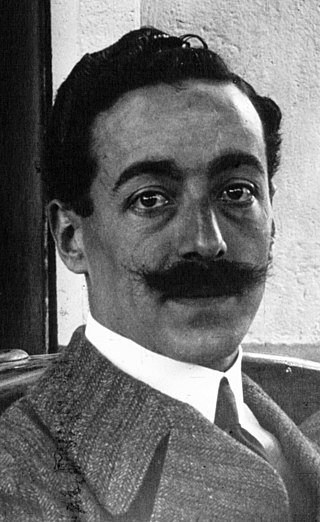
Alessandro Umberto Cagno, Umberto Cagno, nicknamed Sandrin was an Italian racing driver, Aviation pioneer and powerboat racer.

Hubert Le Blon was a French automobilist and pioneer aviator. He drove a steam-powered Gardner-Serpollet motorcar in the early 1900s, and then switched to Hotchkiss for both the world's first Grand Prix at Le Mans in France and the inaugural Targa Florio in Sicily. At the Vanderbilt Cup races on Long Island he competed for the US driving a Thomas.

Margaret Mabel Gladys Jennings was a Scottish motor racing driver. As Margaret Allan she was one of the leading British female racing and rally drivers in the inter-war years, and one of only four women ever to earn a 120 mph badge at the Brooklands circuit. During the war, Jennings worked as an ambulance driver and then at Bletchley Park's intelligence de-coding centre. After the war, she became a journalist and was Vogue magazine's motoring correspondent from 1948 to 1957.

















